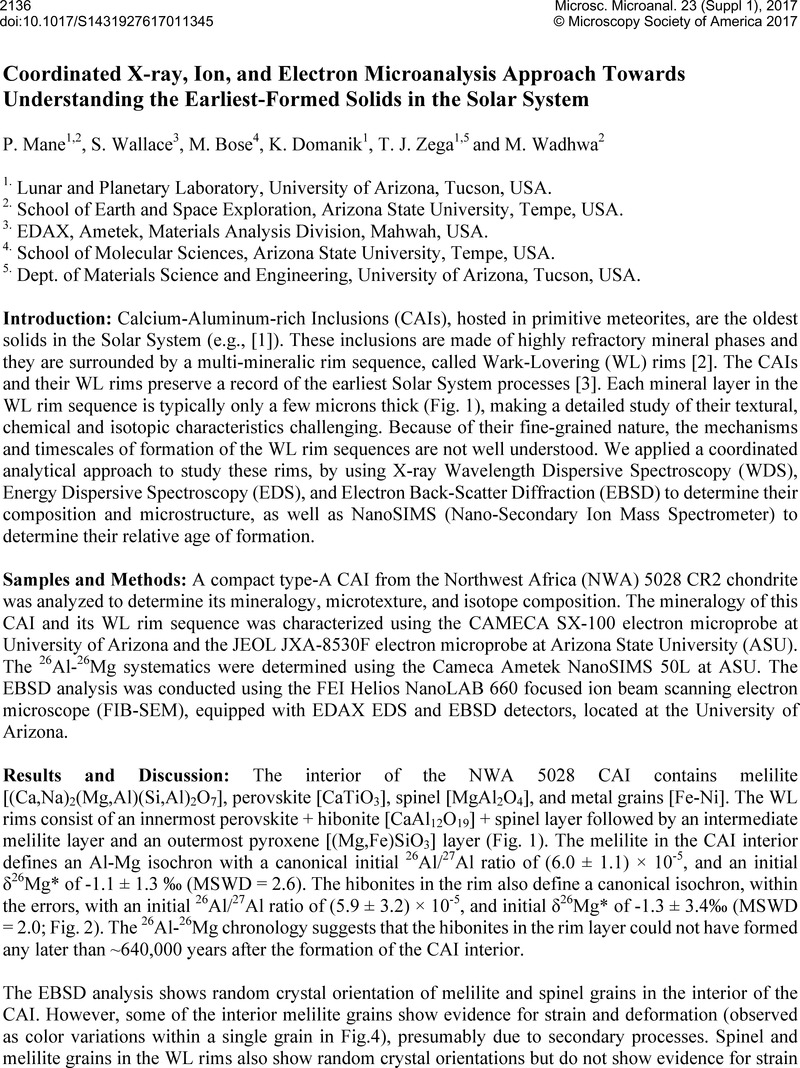No CrossRef data available.
Article contents
Coordinated X-ray, Ion, and Electron Microanalysis Approach Towards Understanding the Earliest-Formed Solids in the Solar System
Published online by Cambridge University Press: 04 August 2017
Abstract
An abstract is not available for this content so a preview has been provided. As you have access to this content, a full PDF is available via the ‘Save PDF’ action button.

- Type
- Abstract
- Information
- Microscopy and Microanalysis , Volume 23 , Supplement S1: Proceedings of Microscopy & Microanalysis 2017 , July 2017 , pp. 2136 - 2137
- Copyright
- © Microscopy Society of America 2017
References
[5] This research supported by National Science Foundation grant number 1531243 and NASA grant numbers NNX15AJ22G and NNX12AL47G. We acknowlegde Paul Wallace at University of Arizona for his help in setting ud the EBSD.Google Scholar


